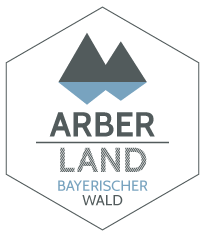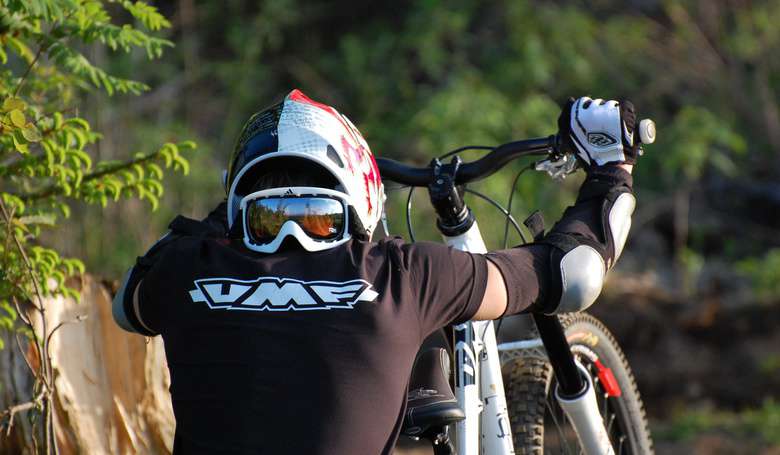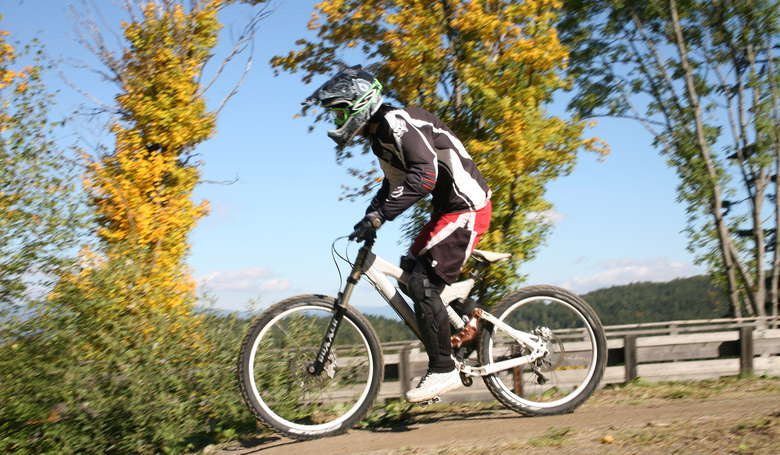From All Mountain to Trial: Mountain Bikes for every Terrain
overview of the most important types of mountain bikes
Suspension
According to the terrain and use of the mountain bike – one of the most important aspects is the suspension. It absorbs shocks and makes the ride comfortable even on the most bumpy trails. There are 2 types of suspension: hardtail and full-suspension.
Hardtail means that the bike does not have rear suspension integrated into the frame. Hardtail-mountain bikes are mainly used for BMX and Cross Country. The alternative is a full-suspension mountain bikes which have suspension both front and rear, integrated into the frame.
Cross Country
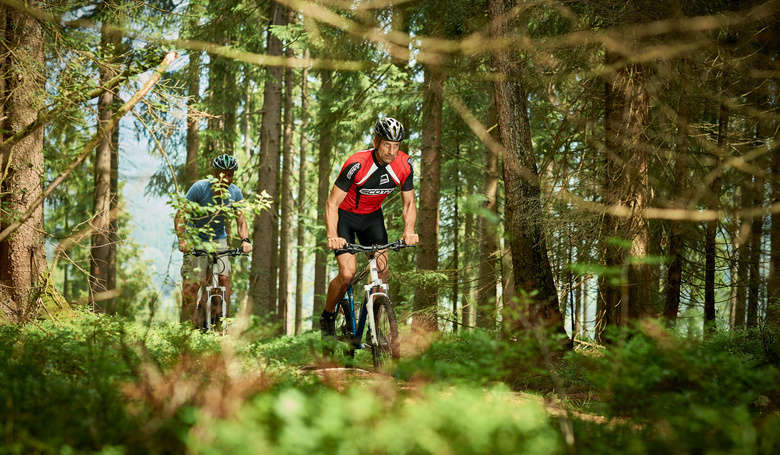
Cross country bikes are ideal for fast riding across asphalt and on unsurfaced trails. Cross country has also been an Olympic mountain bike discipline since 1996. Mountain bikers have to ride a circular track consisting of forest, field and gravel trails, up and downhill, several times. The tracks for the mountain bike marathon are similar but significantly longer.
Cross Country mountain bikes are typically very lightweight, sometimes less than 10 kg, with hardtail suspension and 60-80 mm travel.
All Mountain
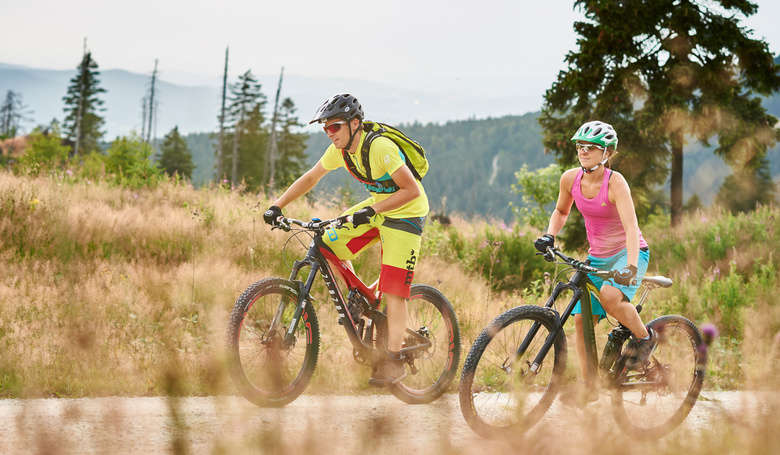
Whether for simple tours or a demanding tour across the alps: the All Mountain bike can tackle all terrains. It differs from a cross country bike in that its tyres have a wider and deeper profile, to cope with all sorts of trails.
The less stretched sitting position on the All Mountain allows the rider a more effective use of strength on uphills. The All Mountain weighs 12-15 kg and has greater travel of 100-140mm. Available as Hardtail or Full-suspension.
Endurro
For those terrains where All Mountain bikes are at their limits, the full suspension Enduro comes into its own. The Enduro can handle uphills and downhills. It has 140-160 mm travel, a variable chassis as well as wider and deeper tread tyres. The rider has a more upright position on these bikes than on cross country or All Mountain bikes. They weigh 13-16 kg.
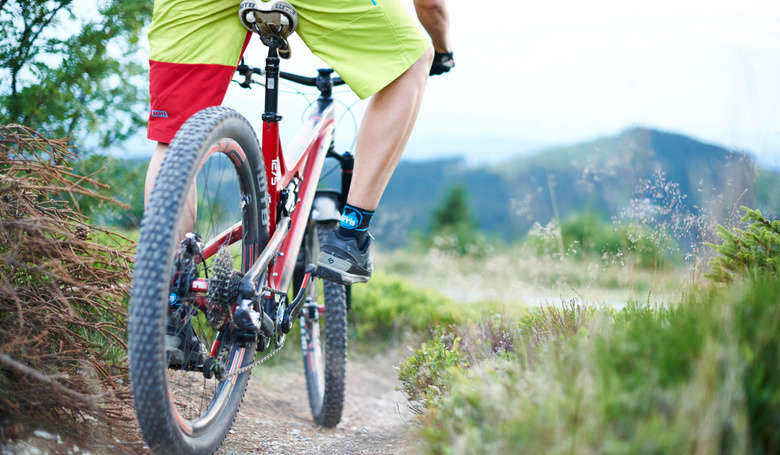
Freeride
These can handle steep mountain trails just as easily as meter high jumps. Comfortable riding on all sorts of difficult terrains is ensured by full suspension, greater travel of 130-200 mm, modern shock absorption systems and lowerable suspension forks.
Freeride Extreme
The Freeride Extreme is only for the hardest mountain bikers. This type of mountain biking has been influenced by Snowboard Freeriding, Freeskiing and Motocross and involves jumps more than 10 meters high and more than 20 meters long, over natural obstacles, high rocks and outcrops. This requires not only an extremely robust Freeride with 200-300 mm travel but also protective clothing for the rider with helmet, shoulder and joint protectors and gloves.
-

Mountainbike-Strecken für Anfänger und Fortgeschrittene finden sie im ARBERLANDBikepark Geisskopf -

Mountainbiken im ARBERLANDVideo Binder
A Heavyweight for Steep Descents: Downhill
Fast descents on difficult terrain also require protective clothing. The Downhill mountain bikes designed for this purpose are at 20 kg heavier than other bikes – due to their stable construction, essential for the demands of downhill riding. Ascents are only possible with the heavy Downhill bikes with a lot of sweat producing effort, which is why Bike Parks or areas with lifts are best suited for this type of sport.
The brakes on Downhill bikes are also particularly sturdy in order to cope with the demands of downhill riding. Disc brakes with 190-210mm diameter are used. Full suspension frames, suspension travel of up to 200 mm and double bridge suspension forks ensure adequate torsional rigidity.
